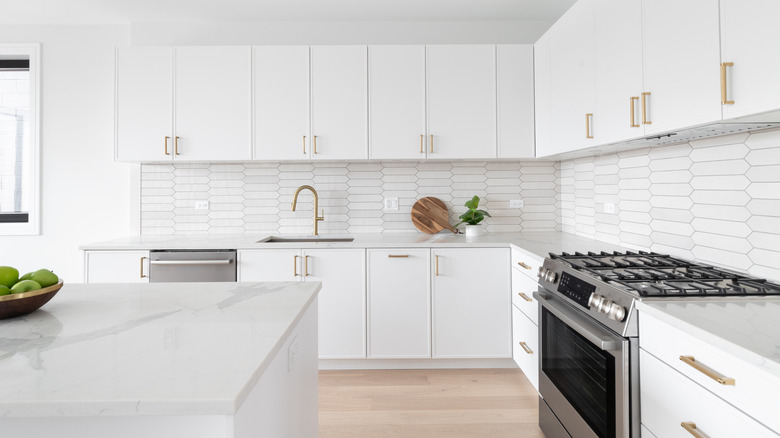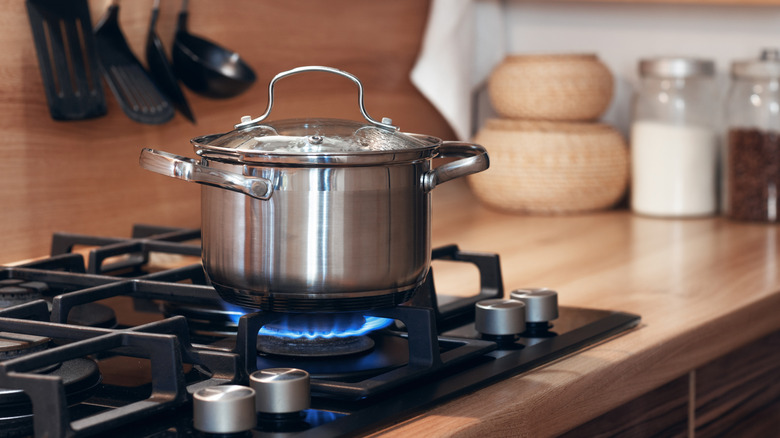It's Time To Ditch One Common Kitchen Appliance For A Safer Alternative
You might not give a second thought to one major kitchen appliance — your gas range. While there has always been a great debate on the differences between gas and electric stoves, more recent data indicates that gas appliances aren't as safe as they were once thought to be. Although it's true that stoves in general pose fire hazards, gas stoves in particular use an open flame for cooking, making the act of accidentally catching something on fire (or at the very least burning something) significantly greater. Plus, there is a risk of gas leaks and health problems.
There are health risks to using an open flame supported by natural gas to cook. Not only do gas stoves produce nitrogen dioxide, but unburned gas could leak out, contaminating your breathing air with benzene — a chemical that can cause cancer. A 2023 study published in the International Journal of Environmental Research and Public Health found there to be a correlation between the use of natural gas stoves and an increase chance of asthma and respiratory illness in children. These dangers grow significantly when there is not proper ventilation in the home, or if the range hood is not used. The range hood should always be turned on when cooking, even if it's just for a minute or two. And for those who hate the bulky feature, there are ways of hiding your stove range hood to achieve the clean look you desire. However, besides health risks, there are other dangers to this popular kitchen appliance.
Safety risks of a gas stove
While many people might prefer gas stoves to electric ones, thanks to the instant temperature control and versatility for different cooking techniques, safety should be a priority. There are many hidden downsides of gas stovetops to be aware of. Some state lawmakers are even working on bans to stop natural gas stoves and furnaces from being placed in new buildings. Frankly, they are a fire hazard. The open flame leaves your home at a greater risk for fires, especially if you have any flammable material nearby. Grease and food debris left on stovetops can also increase these dangers. Further, if any liquids boil over and extinguish the flame, you now have a burner that's leaking gas.
Beyond the obvious dangers of toxic gasses, there are more implicit drawbacks of these stoves, especially for families with children. Most gas stoves have the knobs to turn on the appliance towards the front. It can be easy for a child to bump against a knob or get curious and turn it, potentially flooding the house with a natural gas leak that can lead to carbon monoxide poisoning. Since natural gas is odorless, you could be in a very dangerous situation without even knowing about it. While some electric stoves do have the same knobs on the front, an accidental bump wouldn't cause a toxic gas to enter your home. Plus, there are no open flames to worry about. Homeowners should think twice about the potential safety risks of using a gas stove and consider switching to an electric one instead.

